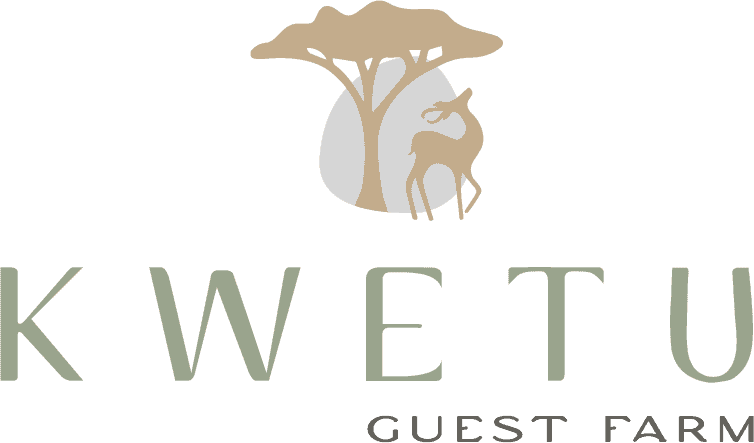An Interview with Kobus Kritzinger
“To plant a garden is to believe in tomorrow” Audrey Hepburn. Here at Kwetu we definitely believe in tomorrow. Our Organic Garden is coming along nicely and we recently had an interview with Kobus Kritzinger who has been part of this project. Below you can read all about it and find inspiration to put on your own garden gloves to enjoy fresher, better organic food for yourself.
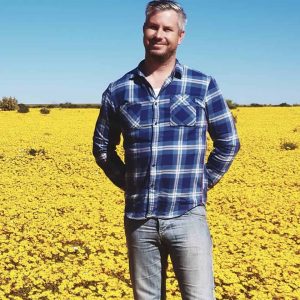
Hello Kobus,
You’ve been part of the work in progress at Kwetu Guest Farm since the very first days. Your vision of a better environmental future for this land drove us to experiment with dozens of exciting new projects. We thought it would be interesting to hear how you got involved in permaculture.
I understand you were a teacher in a previous life. Could you tell us a bit more about that, and what led to your conversation to permaculture?
I was a high school teacher in Hermanus for a number of years. In what turned out to be my final year, I was challenged to come up with a project for the schools in the area. The concept was to start a productive garden at the school which would serve as a blueprint and training centre for other schools in the area. As I had limited time available I searched for a retired community member to mentor teenagers in the garden. My search led me to Avice Hindmarch. It was an appointment with destiny. She not only readily became involved with the project but also became a personal mentor. As a pioneer of the organic movement, permaculture and biodynamics she opened my eyes to the environmental issues conventional pseudo-scientific agriculture are causing, and how it will eventually lead to much hardship for the human race. Suffice to say I tendered my resignation from teaching three months later.
People often hear the word permaculture, but let’s be honest, few of us truly understand what it means. Could you help us along here with a simplified explanation of the concept?
Permaculture is a design science that allows humans to interact with and shape their environment to maximize yields and energy efficiency.
When people hear “permaculture, organic”, I often immediately sense resistance in the sense that it implies complications and difficulties. In other words, fully and nice to hear, but most folks resist it as too complicated. How do you integrate permaculture into your day to day life?
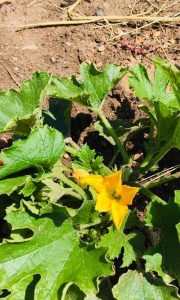
You’re originally from the Cape. Its a phenomenal and endless ecosystem that never ceases to amaze me. How would you describe to the novice the uniqueness of the Cape?
The Cape has a Mediterranean climate with very little rainfall during the summer. Its many mountain ranges serve as catchments during the rainy season(winter), filling dams and replenishing underground water caches. The mountains are in most cases inaccessible and therefore allow for ecosystems to exist in the same fashion it did for millennia. The sandstone mountains have very poor soil and the plants that grow in the Fynbos biome has had to adapt to form an extremely diverse collection of species. The more fertile valleys are mostly farmed these days – mostly to supply the northern hemisphere with Mediterranean produce all year round. Socially the Cape is a melting pot of cultures. It is truly Africa and truly western at the same time.
I had the honor to attend your course in Worcester some years ago with my son, and I have to confess I was taken by your enthusiasm and dedication. In today’s world, amidst all this ecological chaos, how do you keep your focus?
The courses are always an inspiration for me: the enthusiasm of the students rub off on me and on one another. The different circumstances and approaches with which people come are always unique and I am challenged and learn with every course as well. The fact of the matter is that all over there are people with their hearts in the right place. They are ready for the knowledge and hungry for the skills. This draws one in the direction that you should go.
What are the biggest challenges in today’s South Africa from an ecological point of view, and what hopes do you have for permaculture in the near future especially in the Cape?
The pollution of water systems, especially rivers and groundwater, through an indiscriminate application of agricultural chemicals.
The persistence of farmers with extreme monoculture and the eradication of all but the main crop.
The pollution of air with chemical sprays that cause respiratory problems in animals and humans.
What are your thoughts on our recent water crisis in South Africa, and what are some solutions that permaculture offers?
The farming practices that have followed for many decades have left soil all but devoid of organic matter. Organic matter acts like a sponge in soil: it allows for better infiltration and retention of water within the soil. Only in recent years have some farmers started chipping and casting prunings back into orchards. There is growing support for minimum till where farming with grains is concerned. So there have been an improvement and more common sense applied.
Besides increasing the organic content in soil permaculture offers many solutions to ‘drought proof’ land. Slowing down and trapping rainwater as high as possible on the land is one such strategy. A system of swales (contour ditch) connected to small dams allows time for water to seep in and flow through the soil for months instead of over it in minutes. These long term passive systems also counteract erosion.
You were truly an architect of this farm, and every corner of it bears your mark. How did you start with a project so large, where do you begin?
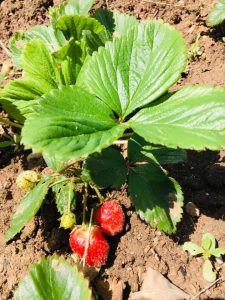
Practically: always start from the top. With a property this size, it is important to find ways of maximizing the amount of water one can collect and store. As this capacity increases, one can add more species of grasses, shrubs, and trees.
What are some of the advantages of this guest farm from a permaculture point of view, and what are some of the most suited plants in this area for land rehabilitation?
Permaculturists get particularly excited when given the opportunity to work with abused and depleted soils. That is because we do not only strive for sustainability but like to work restoratively. Kwetu used to be part of a grain farm and has very limited amounts of natural vegetation left. The challenge is to saturate the land with (more than adequate) rainwater and re-establish as much as possible of the plains renosterveld that once adorned the area. Visitors to the farm love to see the large variety of game. Some of the species are grazers for which there is more than enough grass to graze. The largest challenge lies with increasing the number of shrubs and trees for browsers. While in some instances young trees and shrubs are hampered, overall, the animals have a beneficial effect on the land. A large variety of indigenous tree species have been introduced. Newly planted trees require some temporary protection from browsers to help it establish.
Kwetu being a game farm, and also a guesthouse with a limited surface, what are some of the solutions you implemented at Kwetu that were successful at greening the farm?
Some temporary irrigation has been installed in key areas. This was done using existing infrastructure as far as possible. The areas selected are high impact areas for tourism: around picnic sites and cottages. These areas serve as havens in times of drought and have added advantages of attracting animals to the areas where guests can easily enjoy their presence. A number of swales and diversion ditches have been added to lead water away from roads and into ponds/drinking holes that support a range of fauna.
We’re busy carrying on your legacy with the veggie garden at the bottom of the farm. Could you tell our readers a bit more about companion planting?
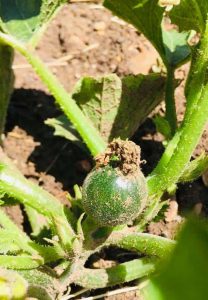
Specifically, what trees do you find are more suitable for our area and for our farm?
Some areas of the farm tend to very wet, even in summer. For these areas i,t is best to select species that can stand water around their roots: trees such as wild fig, water berry, water pear, and cape willow. In the drier areas a, variety of thorn trees (especially karoo thorn, monkey thorn, and paper bark thorn) seem to excel. They also make very good food sources for browsers. We are continually experimenting with other indigenous trees such as karee and yellow wood as well.
How effective are the swales that you built on the farm, and actually, could you describe swales briefly to our readers?
A swale is a soft ditch on the contour that aides in catching surface runoff and allowing it to infiltrate the soil. Water is retained in the landscape instead of running off causing erosion as it goes. Small ones are dug by hand with larger ones done with machinery. These are permanent interventions that have a long term effect on the landscape.
Explain in few words some of the challenges of working on such a project? For example, we noticed the Eland make it their personal business to follow you as you plant new trees on the farm? How did you cope with that? Where did you fail since we learn so much from failure, and what have you learned from that massive living bulldozer?
Although this project has some unique challenges it also has some very common problems: the main difficulty with just about all projects is a social one. Developing a shared vision and having the positive inputs of all parties is a huge challenge. Nature is predictable for the most part and react according to set laws. Humans do not.
At Kwetu some of the sequencing/timing has not always been correct. Too many of any one element becomes a pest: the eland have indeed been a pest in some respects. One can put in place some interventions but ultimately it takes a lot more energy to remedy than to just plan correctly from the outset.
If finances and time were not an obstacle, what would be your pet project on the farm? When I look at our farm and the guesthouse section of the farm as well, there are so many angles, it is easy to get lost in the quest for the perfect solution to all issues, and there are so many of them…
Personally I, would love to properly implement a system of well designed swales and ponds. In addition I, would like to launch a full scale recovery program for the plains renosterveld of which there are remnants on the farm, developing a model for others to emulate.
What was it that you enjoyed the most about Kwetu Guest Farm, and I am not talking about the red wine here…
The views are always spectacular; coupled with the fact that it is a haven for wildlife that can be observed in an ever-improving habitat.
Your final statement about your experience at Kwetu and your vision.
I have always felt excited about arriving at Kwetu. My vision of the farm is for it to be ever more a sanctuary for wildlife and people that come to share in its beauty.
